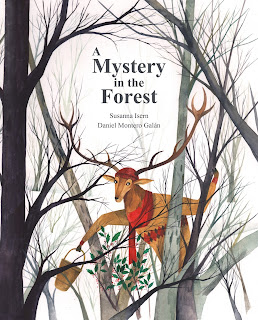Alfa is only twelve years old but he carries a lot of weight on his young shoulders. Each month the family, his sister and Great Grandmother, have to find fifty dollars for their rent. They live in a two room hut with no electricity and no running water.
His great Grandmother, Mama Merryfield, makes around ten dollars a week cleaning houses or sometimes only six or seven if "the white ladies were mean." Alfa works in a grocery story filling shelves, cleaning and stacking vegetables. He makes about five dollars every two weeks and older sister Zinnia makes about the same. "So our total family income was about sixty dollars a month, and we paid fifty dollars in rent."
But things are going wrong. Each month money disappears from their hiding place. This month they are ten dollars short for the rent. Then when all three are working at a cleaning job, the home owner accuses them of stealing over $2000 from the kitchen. Alfa, Zinnia and Mama Merryfield are African American and this is Alabama. They are considered guilty automatically.
While all of this is happening every one is walking. It is the time of the bus boycott. Now Alfa needs to prove his family are innocent, he needs to find the thief and he desperately needs to find the extra ten dollars for their rent. His fears about eviction and homelessness are heart breaking.
Here are some text quotes to give you a flavour of this writing and an idea about life during these times:
"I saw a police car slow down as it drove by. The policeman tilted his head, staring at my bloodied face looking up at him. He rode on. The white boys kept kicking me. If I had struck one of them while the policeman was watching, I would have been arrested and beaten at the police station."
"The Montgomery bus system was bad. We didn't blame the company or the drivers; we blamed the System. The System made you pay up front, then get off the front of the bus and enter in the back door. Sometimes before you reached the back door, the driver would drive off with your dime or nickel."
"I had heard that white police were arresting coloured drivers right and left for going to slow, for going to fast, stopping their cars, starting their cars. The fines were costly, yet the drivers kept rolling."
Publisher blurb: During the Alabama bus boycott, six months after Rosa Parks made her famous bus protest, Alfa Merryfield and his family struggle to pay the rent. But someone keeps stealing their rent money -- and now someone is accusing them of stealing! With only a few days left before rent is due, Alfa and his sister, Zinnia, know they don't have much time. To solve this mystery, they must "walk the walk and talk the talk of nonviolence" that Martin Luther King, Jr. and other leaders preach -- and what they discover may be more than they dreamed...
This book from 2000 is now sadly out of print but if you can find a copy and if you work in a school library read chapter 19. It describes a terrible scene where Alfa tries to use the city library.
With my city in lockdown I am rereading some books from my own shelves. I had a copy of Walking to the Bus-rider blues in my previous library and I was happy to spot this copy for just $1 at a charity book sale. Read more about Harriette Gillem Robinet here.
I love talking to students about Rosa Parks. Even though I am in Australia, I am able to incorporate this into our Grade 5 topic on Democracy. In this unit we talk about gaining the vote (suffragettes) and legal and illegal ways of protesting. Rosa refused to give up her seat on the bus and so for 371 the African American people and other citizens of Montgomery Alabama walked everywhere. It was a peaceful and very powerful protest. They walked to work, to church, to visit friends, to shop and to the doctor. They walked in the summer heat, the winter cold and in the rain and through thunder storms. I read these three books here in Australia to my students:
I am listing this book for older primary students aged 11+ because I think readers need some maturity to understand the dreadful racism which is described here.



















































